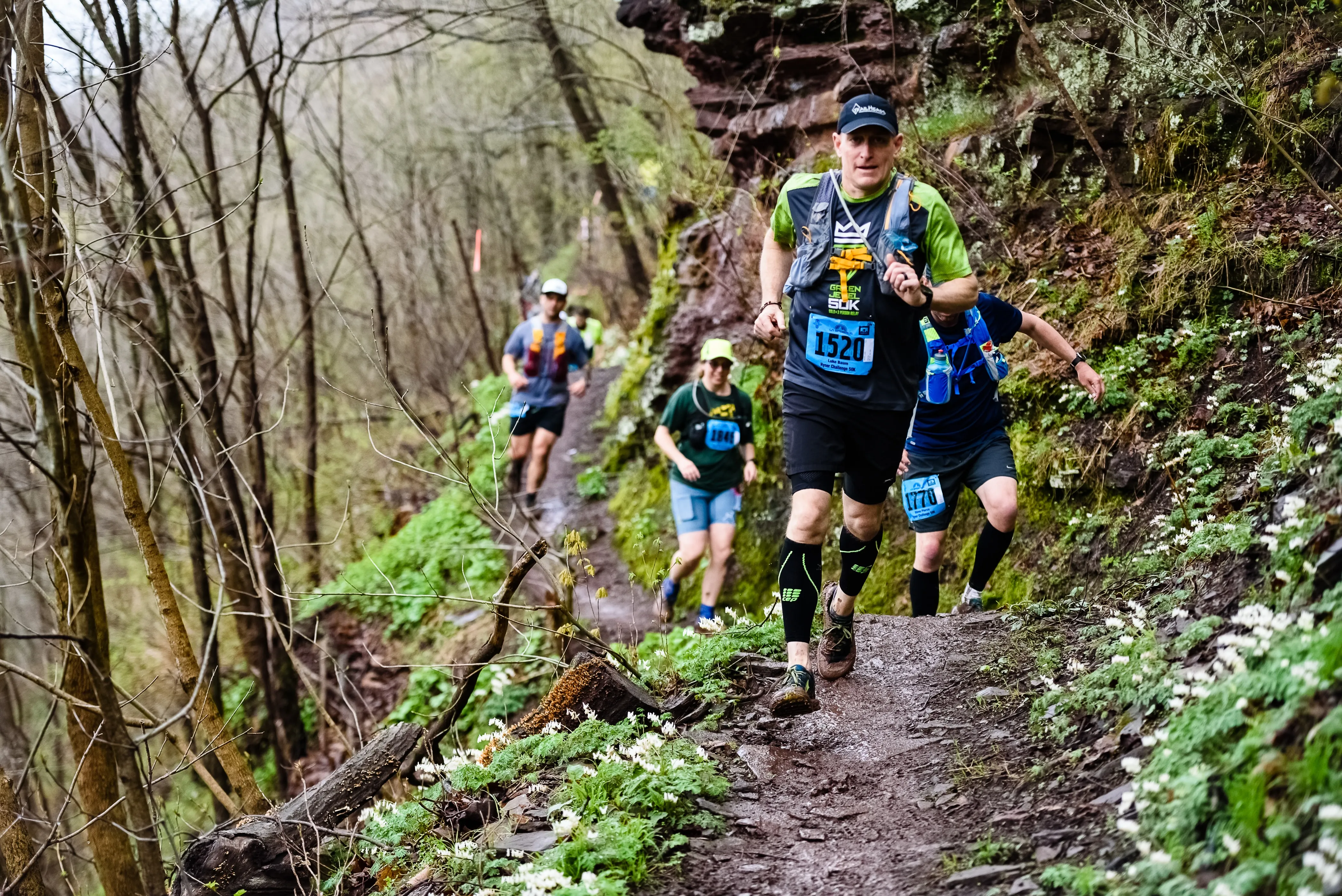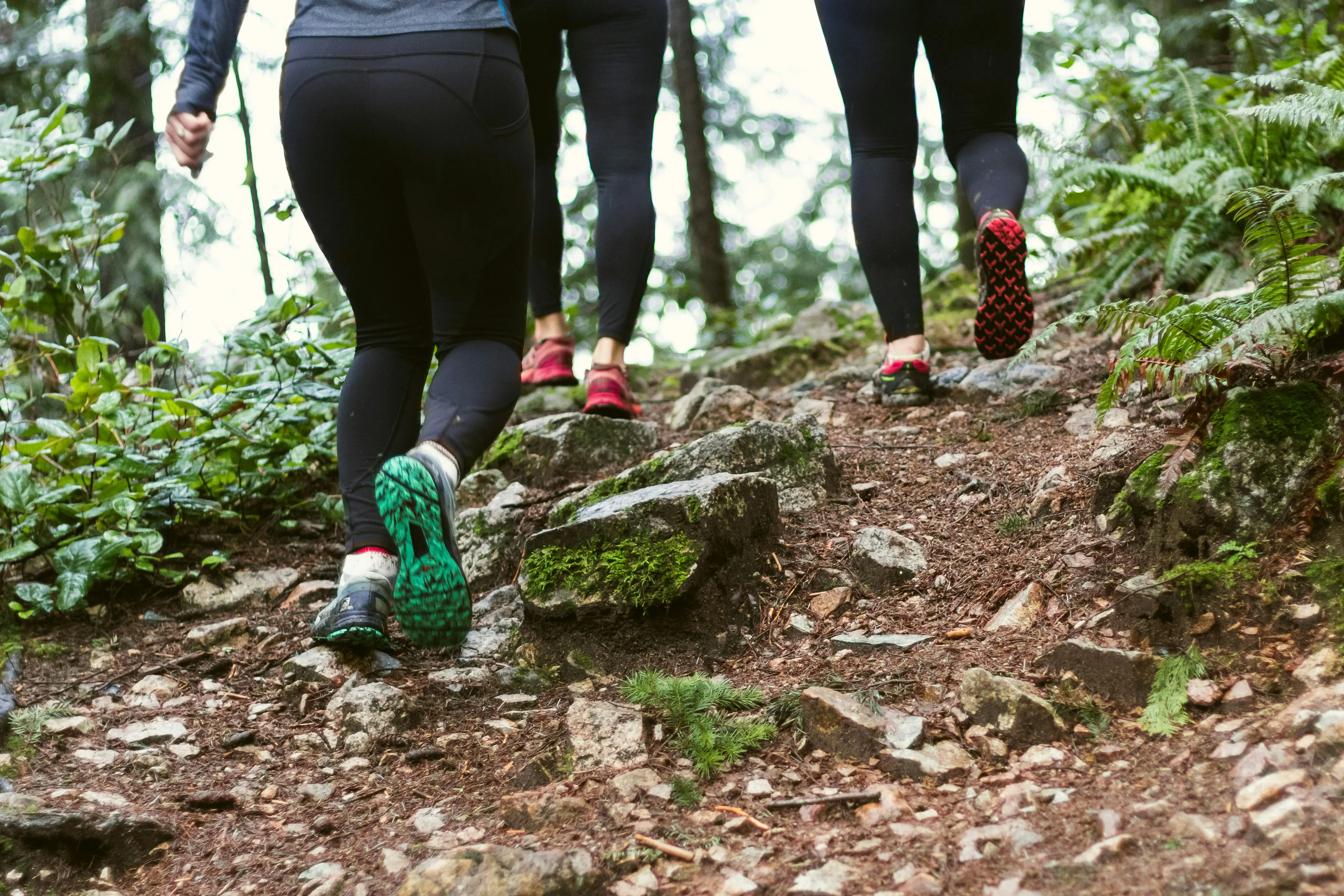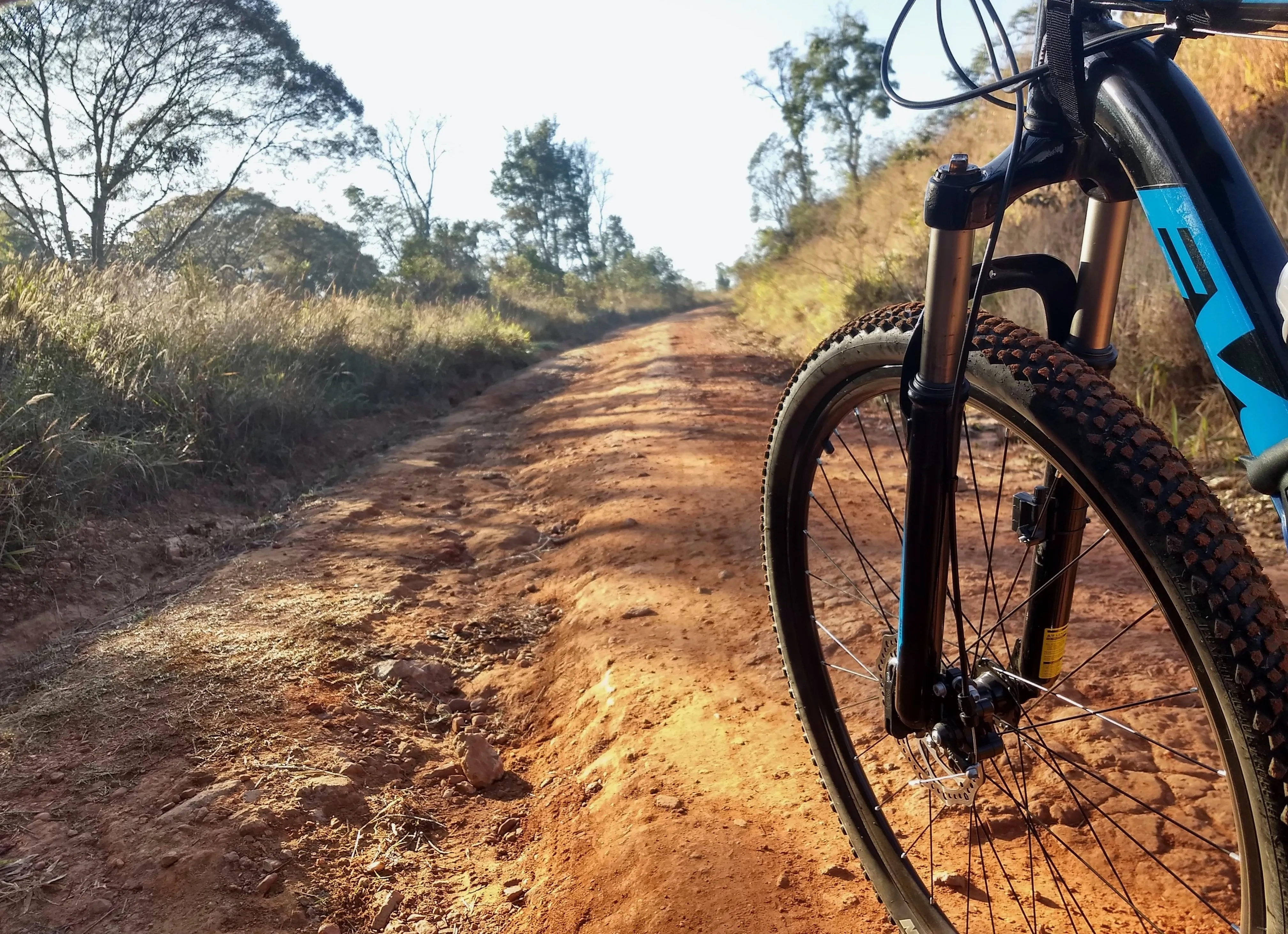Ditch the Roads and Embrace the Trails: A Beginner's Guide to Trail Running
Embrace the Wild: A Beginner's Guide to Trail Running
Average Reading Time: 10 minutes
Table of Contents
Introduction to Trail Running
- What is Trail Running?
- Benefits of Trail Running
- Challenges of Trail Running
- The Growing Popularity of Trail Running
Trail Running Basics
- Defining Trail Running
- Differences between Trail Running and Road Running
- Types of Trail Running
- Trail Running Gear Essentials
- Trail Running Tips for Beginners
Essential Trail Running Gear
- Proper Footwear: Sturdy Trail Shoes with Good Traction
- Comfortable Clothing: Breathable Layers
- Outerwear: Waterproof Jacket and Pants
- Hydration Pack: Carries Water and Snacks
- First-aid Kit: Provides Essential Supplies
- Navigation Tools: Map and Compass or GPS Device
Trail Running Safety Tips
- Planning Your Route: Research the Trail, Check Weather Conditions, and Inform Someone of Your Itinerary
- Being Prepared for Weather Changes: Dress in Layers and Pack Appropriate Gear for Inclement Weather
- Respecting Wildlife: Avoid Approaching or Feeding Animals, and Keep a Safe Distance
- Staying Hydrated and Fueled
- Being Mindful of Your Surroundings
- Knowing When to Turn Back
Embarking on Your Trail Running Journey
- Finding Your Trail Running Niche: Choose a Trail Running Type That Suits Your Interests and Fitness Level
- Gradually Increasing Your Distance and Difficulty
- Listening to Your Body: Take Breaks when Needed and Don't Push Yourself too Hard
- Savoring the Experience
- Overcoming Challenges and Celebrating Your Progress
5 FAQ's About Trail Running

Chapter 1: Introduction to Trail Running
What is Trail Running?
Trail running is a type of running that takes place on unpaved trails, as opposed to paved roads. It's an increasingly popular activity that offers a unique blend of physical challenge, mental stimulation, and a deep connection with nature.
Trail running offers several distinct advantages over road running. The varied terrain of trails challenges your body and mind in ways that are less monotonous than running on a flat surface, which can lead to greater fitness gains. Additionally, the immersion in nature provides stress relief, boosts mood, and fosters a sense of well-being.
Benefits of Trail Running
Trail running offers a multitude of benefits for both physical and mental health. Here are some of the key advantages.
Table 1: The Many Benefits of Trail Running
Challenges of Trail Running
While trail running offers numerous benefits, it also presents unique challenges that set it apart from road running:
- Uneven Terrain and Obstacles: Trail running requires greater adaptability and strength due to the varied terrain, including rocks, roots, hills, and uneven surfaces.
- Changing Weather Conditions: Trail runners must be prepared for unpredictable weather changes, such as rain, wind, and temperature fluctuations.
- Wildlife Encounters: Trail runners should be mindful of wildlife, keeping a safe distance and avoiding approaching or feeding any animals.
- Need for More Navigation Skills: Trail running often involves navigating unmarked trails, requiring basic map-reading and orienteering skills.
The Growing Popularity of Trail Running
Trail running has experienced a surge in popularity in recent years, driven by a growing desire for outdoor adventure, a focus on health and well-being, and an appreciation for nature. The accessibility of trails, advancements in trail running gear, and the availability of online resources have further fueled this trend.
As more people discover the joys of trail running, it's poised to become even more popular in the years to come. The allure of combining physical and mental challenges, immersing oneself in nature's beauty, and experiencing the thrill of exploration is undeniable.

Chapter 2: Trail Running Basics
Defining Trail Running
Trail running is a form of running that utilizes unpaved trails, as opposed to the paved roads commonly associated with road running. It involves navigating natural landscapes, often encompassing a variety of terrains, including dirt paths, gravel roads, and even rugged mountain trails.
Differences between Trail Running and Road Running
While both trail running and road running share the common goal of covering a certain distance on foot, they differ in several key aspects:
- Terrain: Trail running takes place on unpaved trails, while road running occurs on paved surfaces.
- Challenge: Trail running provides a more challenging and varied workout due to the varied terrain, while road running offers a more consistent and predictable experience.
- Atmosphere: Trail running immerses runners in the natural environment, while road running often takes place in urban or suburban settings.
Types of Trail Running
Trail running encompasses a wide range of subcategories, each with its unique characteristics and challenges:
- Day Hikes: Relatively short trail running distances, typically less than 10 miles, that are focused on exploring natural areas.
- Ultramarathons: Extreme trail running events that cover distances of 50 miles or more, often over multiple days.
- Adventure Races: Endurance events that combine trail running with other disciplines, such as mountain biking, kayaking, and orienteering.
- Trail Running Races: Competitive events that involve racing against other runners on designated trail routes.
Trail Running Gear Essentials
Proper gear is essential for safe and enjoyable trail running experiences. Here are some key items to consider:
- Proper Footwear: Trail shoes with good traction and support are crucial for navigating uneven terrain and protecting your feet from obstacles.
- Comfortable Clothing: Breathable and moisture-wicking clothing allows for freedom of movement and regulates temperature as conditions change.
- Outerwear: Waterproof jacket and pants provide protection from rain, wind, and cold temperatures.
- Hydration Pack: Carries water and snacks to stay hydrated and fueled throughout your run.
- First-aid Kit: Essential supplies for treating minor injuries or emergencies.
- Navigation Tools: Map and compass or GPS device allow you to stay on track and avoid getting lost.
Chapter 3: Essential Trail Running Gear
Proper Footwear: The Foundation of Trail Running
Shoes are the most important piece of trail running gear, as they provide the necessary support and traction to navigate diverse terrain. Trail shoes typically have deeper treads than road running shoes to grip slippery surfaces and sturdy soles to withstand uneven terrain. Consider factors like cushioning, stability, and breathability when choosing trail shoes.
Comfortable Clothing for All Weather Conditions
Dress in layers to adapt to changing weather conditions during your trail runs. Choose breathable fabrics that wick moisture away from your skin to prevent overheating and discomfort. In cooler temperatures, pack a lightweight jacket or vest for extra warmth.
Protection from the Elements: Outerwear for All Seasons
A waterproof jacket and pants are essential for trail running in wet or cold conditions. These garments will keep you dry and comfortable, allowing you to focus on your run without distractions.
Staying Hydrated and Fueled: Hydration Packs and Snacks
Trail running can be an intense workout, so staying hydrated and fueled is crucial for optimal performance and safety. A hydration pack provides easy access to water and electrolyte-rich fluids, while snacks like energy bars or gels can replenish your energy reserves.
Essential Supplies for Emergencies: A First-aid Kit
Even the most experienced trail runners can encounter unexpected injuries or health issues. A well-stocked first-aid kit can provide the necessary tools and supplies to treat minor injuries and manage minor emergencies.
Navigating the Trails: Maps, Compasses, and GPS Devices
Trail running often involves navigating unmarked or poorly marked trails, making navigation skills essential for safety. A map and compass are traditional tools for backcountry navigation, while GPS devices offer more precise location tracking.
Chapter 4: Trail Running Safety Tips
Planning Your Route: Research, Check Weather, and Inform Others
Thorough planning is essential for safe trail running. Before heading out, research the trail you're planning to run, checking for its difficulty level, length, and potential hazards. Verify weather conditions and inform someone of your itinerary, including your expected return time.
Being Prepared for Weather Changes: Adaptable Clothing and Gear
Trail running often involves unpredictable weather changes. Dress in layers to adapt to changing temperatures and pack appropriate gear, such as waterproof outerwear for rain or wind. Be prepared to adjust your pace and hydration if the weather turns harsh.
Respecting Wildlife: Observe and Keep a Safe Distance
Trails may harbor wildlife, so exercise caution and respect animals. Avoid approaching or feeding them, and keep a safe distance to prevent startling or endangering them. If you encounter wildlife, remain calm and move away slowly.
Staying Hydrated and Fueled: Consistent Nutrition and Hydration
Regularly consume water and snacks throughout your run to maintain energy levels and prevent dehydration. Carry a hydration pack or water bottle, and pack energy bars, gels, or other snacks to fuel your body.
Being Mindful of Your Surroundings: Focus on the Trail and Watch Your Step
Trail running requires constant awareness of your surroundings. Pay attention to the terrain, obstacles, and potential hazards. Avoid distractions like music or conversations and focus on your footing and technique.
Knowing When to Turn Back: Recognizing the Limits
Don't hesitate to turn back if you feel unsafe, tired, or disoriented. It's better to be safe and end your run early than to push yourself too far and risk injury or getting lost.

Chapter 5: Embarking on Your Trail Running Journey
Finding Your Trail Running Niche: Choose the Right Type of Running
Explore different types of trail running to find what suits your interests and fitness level. Day hikes offer a less strenuous introduction, while ultramarathons and adventure races provide more challenging experiences.
Gradually Increasing Your Distance and Difficulty: Start Small and Progress Gradually
Don't rush into long or difficult trails initially. Start with shorter, easier trails and gradually increase your distance and difficulty as your fitness improves.
Listening to Your Body: Take Breaks and Avoid Overexertion
Listen to your body and take breaks when needed. Don't push yourself too hard, as this can lead to injuries and discouragement. Slow down when you feel tired and gradually increase your pace as you recover.
Savoring the Experience: Embrace the Beauty and Challenge
Appreciate the beauty of nature and immerse yourself in the experience. Trail running is not just about physical fitness; it's about connecting with the outdoors and enjoying the journey.
Overcoming Challenges and Celebrating Your Progress: Celebrate Your Achievements
Set realistic goals and celebrate your accomplishments, no matter how small.
Overcoming challenges is a rewarding part of trail running, and celebrating your progress will keep you motivated and inspired.
Communicate with Others: Share Your Experiences and Seek Guidance
Connect with fellow trail runners, share your experiences, and seek guidance from experienced runners. Joining a trail running club or group can provide valuable support and motivation.
5 Frequently Asked Questions (FAQs) About Trail Running
Trail running is an exhilarating and rewarding activity that can help you improve your physical and mental health. If you're interested in trying trail running, I encourage you to do your research, find a trail that's right for you, and get started. You won't regret it!
P.S. Don't forget to follow us on social media, the community, the website and the - - YouTube channels for even more inspiration and updates!
- Website: https://indonesiaoutdoorsports.com
- Outdoor Community: https://community.indonesiaoutdoorsports.com
- The Store: https://theoutdoorshed.cc
- Book Your Adventure: https://yourtravelhub.cc
- YouTube Channel: @IndonesiaHiking2020
- YouTube Channel: @IndonesiaTrailRunning2020
- YouTube Channel: @IndonesiaDiving2020
- YouTube Channel: @IndonesiaMTB2020
Learn more about "Outdoor Adventures" here and stay informed by subscribing to the free newsletter and community!













